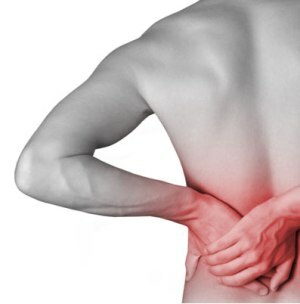 The neck and lumbar spine are most prone to nerve impairment. In the thoracic region, the pinching of the nerve occurs much less often because of its lack of mobility. This occurs in people who have reached the age of 30 and older.
The neck and lumbar spine are most prone to nerve impairment. In the thoracic region, the pinching of the nerve occurs much less often because of its lack of mobility. This occurs in people who have reached the age of 30 and older.
The fact is that with age, human bones wear out, they become thinner. Therefore, the intercostal nerve roots, which are located between the intervertebral discs, can be trapped by these discs or vertebral bodies.
This pinching is accompanied by a sharp aching pain in the chest and back. The pain may be aggravated when making any movement or when trying to sneeze or cough.
Contents of the article
- What provokes infringement?
- How it looks and feels
- How to distinguish from heart problems and other diseases
- First aid - what to do if it is sharply stuck in the chest
- Diagnosis
- Complex of measures
- Hidden and obvious consequences
- Primary prevention and relapse
What provokes infringement?
The main cause of infringement of the nerve of the thoracic region is intercostal neuralgia. Its aggravation can be caused by too abrupt movement, a rise in excessive gravity or a wrong turn of the body.
Other reasons why often it hurts in the chest:
- The presence of such a disease as osteochondrosis can also cause a nerve pincer. When osteochondrosis occurs
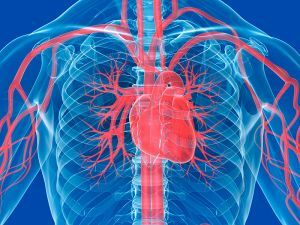 displacement of the vertebrae and nerve compression. Disc protrusion or an intervertebral hernia may occur.
displacement of the vertebrae and nerve compression. Disc protrusion or an intervertebral hernia may occur. - Congenital or acquired abnormalities in the structure and operation of the spine can cause nerve congestion. One example is a disease like scoliosis .
- Hypertension of the back muscles .Usually occurs in people who engage in sports or under heavy physical stress. Muscles spasmodic and jam the nerve endings.
- Tumor and inflammation of the spine , caused by various factors, can also cause the nerve of the thoracic region to be infringed.
- People with with unstable psyche, prone to frequent stress and depression of , often encounter a problem of nerve compression.
The older people and athletes are more prone to jamming the nerve. Or people whose work patterns involve heavy physical activities. And also people who have a low lifestyle on the contrary.
Infringement of a nerve of a thoracal department of a backbone occurs only at people of mature and advanced age. Infants are not prone to pinched nerve in this department of the spine.
Most often, with birth trauma or maltreatment of the newborn, the nerve pincering in infants occurs in the cervical spine.
How it looks and feels
When the nerve is squeezed in the chest, the following symptoms are observed:
- , pain and discomfort in the spine appear in the chest;
- pain worsens when you try to sneeze or cough;
- in some cases, syncope and memory loss are possible;
- blood pressure unstable;
- possible pain in the stomach, resembling pain in gastritis or ulcers;
- numbness of hands or wrists;
- pain is felt even with breathing, with inspiration is increased;
- possible loss of sensitivity of the skin of the back;
- weakness and lethargy, unwillingness of active life;
- stiffness and pain in the chest, which does not go away with the use of pain medications.
How to distinguish from heart problems and other diseases
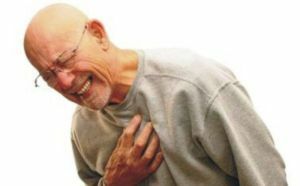 Very often pinch of the breast nerve is confused with heart disease. The symptoms of these diseases are indeed somewhat similar. However, you can try to determine the cause of the pain.
Very often pinch of the breast nerve is confused with heart disease. The symptoms of these diseases are indeed somewhat similar. However, you can try to determine the cause of the pain.
If the nerve is squeezed, the pain can be prolonged, not stopping day nor night. If there was a pinching of the heart muscle, the pain is paroxysmal and passes for some time. Usually accompanied by a decrease or increase in blood pressure.
Neuralgic diseases are not helped by the use of conventional analgesics or cardiac drugs. When probing intercostal areas, the pain intensifies. With cardiovascular disease, pain can be removed with the help of special drugs or analgesics.
For neuralgic diseases, pain can be given in the arm, lower back, shoulder, under the shoulder blade or neck. With heart disease, pain is localized only in the chest and heart.
With neuralgia, the pain increases with movement of the hand, head, rotation or turn of the trunk, with sneezing and coughing, with deep inspiration and any change in the position of the body. With heart disease, the stiffness in the chest is permanent and does not change with a change in body position or with inspiration and expiration.
First aid - what to do if it is sharply stuck in the chest
Nerve blockage can occur suddenly and in any, even the most inappropriate place and situation. In this case, first of all 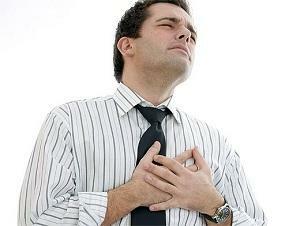 it is necessary to call the doctor and first aid the victim before his arrival.
it is necessary to call the doctor and first aid the victim before his arrival.
To do this, you need to lay the patient on a hard surface, on top of which lay a soft blanket or blanket and ensure its immobility. The patient should lie in the position where the pain is felt the least. In this case, it is necessary to release his chest from tightly squeezing clothes, to provide access to fresh air.
Usually nerve compression is accompanied by severe unbearable pain, so you need to try to anesthetize the place of pinching with analgesics. Because of the suddenness of the pinch, the patient can experience not only unbearable pain, but also a nervous shock. In this condition, the patient needs to give sedatives.
Upon arrival, the doctor should tell you about all the drugs that have already been given to the patient. Hospitalization occurs only in the most complicated cases. Usually, the doctor pains the place of pain, taking into account the drugs already taken, and recommends a further examination.
Diagnosis of
If you have severe chest pain, you need to contact a specialist for help. In order to establish the cause of the pain and prescribe the correct 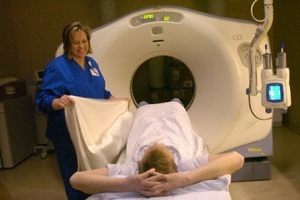 treatment, the doctor will prescribe the necessary examinations of the heart and spine.
treatment, the doctor will prescribe the necessary examinations of the heart and spine.
To check the heart, the cardiologist will prescribe an electrocardiogram( ECG) and ultrasound( ultrasound).
The vertebral column is checked by X-ray and magnetic resonance imaging( MRI).Only having on hand the results of these studies, the doctor will be able to accurately diagnose and prescribe treatment.
Complex of measures
Treatment of infringement of a nerve of a thoracal department depends on the reason on which there was a clamping of a backbone. The primary goal is to release the pinched nerve and get rid of the causes that have served it. After this, it is necessary to restore the functions of the released nerve.
For effective treatment, medication is used. It includes the following medications:
- Sedative preparations .They exert a calming effect on the patient, help restore sleep.
- Muscle relaxants .Help to remove muscle spasms and eliminate pain.
- Anti-inflammatory drugs .Help to remove the inflammation from the affected area.
- Group B vitamins .The lack of vitamin B in the body leads to a malfunction in the nervous system.
The following therapies are also used:
- Physiotherapy - electrophoresis with the addition of anti-inflammatory and analgesics.
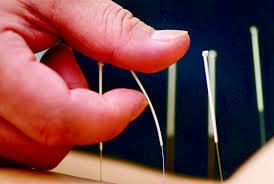
- Therapeutic gymnastics .Taking into account the severity of the disease and the damage to the thoracic department, the specialist determines the degree of stress from special exercises.
- Acupressure massage .With the help of this procedure, blood circulation is established on the affected area. This leads to faster recovery of the nerve.
- Acupuncture .The procedure of acupuncture also helps to regulate blood circulation, as well as completely remove or reduce pain in the affected area.
An effective addition to the traditional methods of treatment for pinching the nerve in the thoracic area can be folk remedies available for home use.
In folk medicine there are many such recipes, we will consider some of them:
- garlic oil is bred in 0.5 liters of vodka and this composition rubs the affected place;
- hard boiled egg is cut and applied to a sore spot, kept until completely cooled;
- a tablespoon of peppermint leaves are poured with boiling water and drink such a decoction before going to bed for half a cup;
- horseradish leaves are applied to sore spots and wrapped on top with a woolen cloth.
Concealed and obvious consequences of
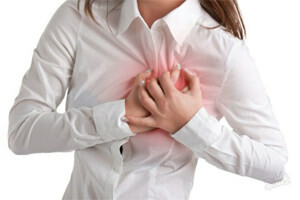 Possible consequences of pinching the nerve can be appalling. Especially if you do not pay attention to this problem for a long time and do not go to a doctor.
Possible consequences of pinching the nerve can be appalling. Especially if you do not pay attention to this problem for a long time and do not go to a doctor.
This threatens with complications such as protrusion of discs, intervertebral hernia, impaired movement( paralysis full or partial).
There is also a failure in the body's immune system, which allows different viruses to attack unprotected body cells.
Pressure surges and general malaise can cause malfunctioning of the internal organs.
Primary prevention and recurrence of
In order to avoid primary or repeated pinching of the nerve in the chest, the following rules should be observed:
- healthy lifestyles - swimming, walking in the fresh air, morning exercises;
- proper nutrition - fruits, vegetables, products containing calcium and magnesium;
- timely treatment of neurology-provoking diseases;
- alternation of rest with physical activity;
- posture control - avoid long-term presence in one pose;
- exclude weight lifting;
- should not be exposed to subcooling.
Self-pinched nerve does not pass. In order not to expose yourself to severe long-term treatment and surgical intervention, you need a timely call to the doctor. Only in this case you can put on a positive outcome of the disease.

